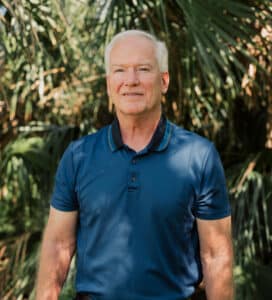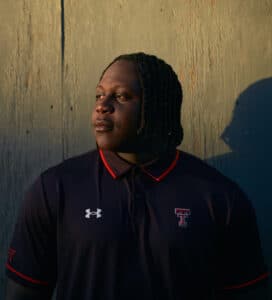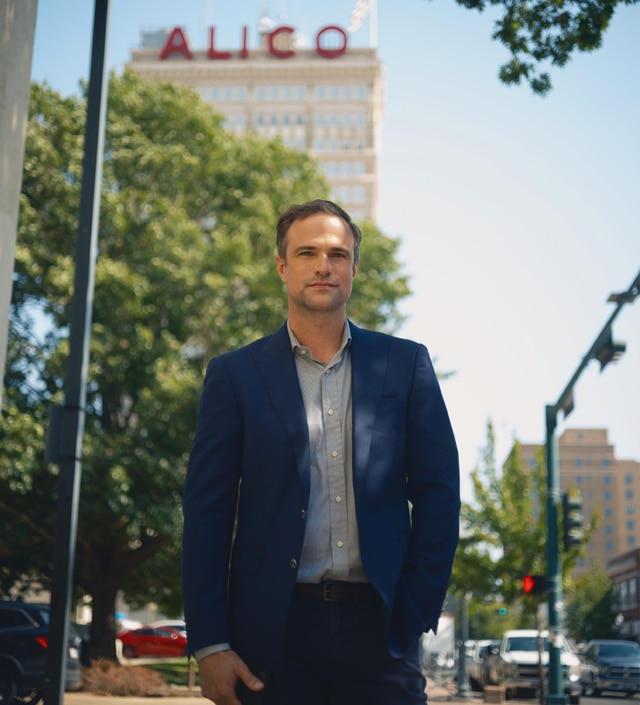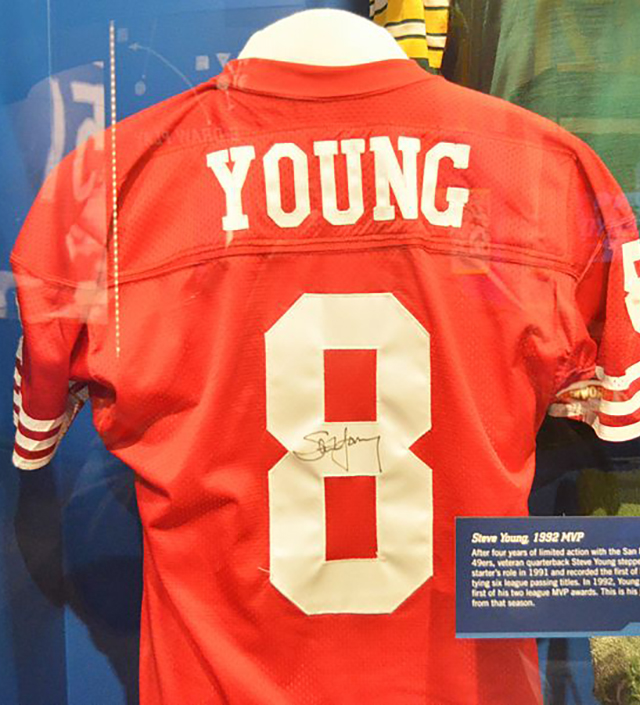The key to recruiting top college football players these days is not just a lavish training facility or a storied coach. It is ensuring the chance for them to hook up with a new type of operation that can pay them eye-popping sums, collected from wealthy boosters who can often write off the donations, for taking on a bit of outside work.
The rapid rise of big-dollar payments to student-athletes from so-called donor collectives has emerged as one of the biggest issues in college sports, transforming how players are recruited and encouraging a form of free agency for those looking to transfer. And because many of the groups are set up as charities or with charitable arms that make donations tax-deductible, they are drawing scrutiny from the Internal Revenue Service.
The shift stems from a decision forced on the NCAA two years ago to allow payments to student-athletes. The system that has grown out of that change is reshaping college football and other major sports by unexpectedly empowering collectives, little-regulated groups that raise money from alumni and other die-hard fans and channel the proceeds to players, ostensibly for charitable work, social media posts or other small tasks.
While in theory they operate independently of athletic programs, collectives have become deeply embedded in the economics of college sports, offering vast supplements to the scholarships that schools provide.
One player at Michigan State University now makes $750,000 a year, according to the group that pays him. At Ohio State University, some players not only get a paycheck — they get a free car lease to boot, courtesy of a donor collective.
“It’s a sweet car,” Rick Ricart, a car dealer and booster for Ohio State, said as he filmed himself giving a wide receiver a Dodge Challenger. “We’re looking for some sweet plays on the field.”
The upheaval has its roots in a Supreme Court decision and a handful of state laws that made it illegal in 2021 for the NCAA to continue its longstanding prohibition on athletes making money from endorsements. In dropping the ban, the NCAA assumed the result would be a way for star athletes to get endorsement deals, a cut of jersey sales or money for acting as social media influencers — also known as “name, image, likeness” arrangements, or NIL.
Instead, a very different model sprang up in parallel, one in which the collectives have effectively hijacked the NIL system to circumvent the NCAA’s still-in-force ban on paying players to play by finding ways to get more money to more athletes.
The collective system is “a pay-for-play scheme disguised as NIL,” Tony Petitti, the commissioner of the Big Ten Conference, said at a Senate hearing this past week. “We are concerned that management of college athletics is shifting away from the universities to collectives.”
The New York Times identified more than 120 collectives, including at least one for every school in each of the five major college football conferences. The average starter at a big-time football program now takes in about $103,000 a year, according to Opendorse, a company that processes payments to the players for the collectives. This year, Opendorse said it expects to process over $100 million in payments for athletes, with about 80% coming through collectives.
In tandem with the loosening of transfer restrictions, which no longer require athletes to automatically sit out a year if they change schools, the scale of the available payments has become a critical factor as coaches seek to retain their best players and poach talent from rival schools.
“It’s the most important thing in college football,” said Kyle Whittingham, the head coach at the University of Utah. This month, Utah’s Crimson Collective announced that every scholarship football player will be able to drive a new $61,000 Dodge truck at no cost.
“It’s the most important thing in recruiting, which is the most important thing to your program,” Whittingham said.
After an abysmal offensive performance last season, the Iowa Hawkeyes wanted to lure Cade McNamara, a quarterback who had helped Michigan reach the College Football Playoff in 2021 but had entered the transfer portal after losing the starting job last season. McNamara, who said money was an explicit part of his search for a new school, got an offer from a collective at the University of Iowa called the Swarm Collective.
“Once it was put into writing, that’s when I knew what I would be getting if I went to Iowa,” McNamara said.
He said yes.
The Swarm Collective said its charitable arm had, indeed, hired McNamara, who suffered a season-ending knee injury on Sept. 30, for a job delivering meals to seniors and visiting children in hospitals. It pays about $600 an hour. The group also has a for-profit arm, Swarm Inc., which pays him even more to make ads for the collective’s corporate supporters.
NCAA rules prohibit collectives from offering compensation as a recruitment tool. Despite McNamara’s assertion that the collective offered him a job before he transferred, the collective denied doing so.
An NCAA spokesperson said that NIL deals that are conditional on enrollment in a particular school would likely violate the organization’s rules, but declined to comment on a specific case.
Pride and a Tax Deduction
Aside from the occasional deal whose specifics become known, there is no public list of which athletes are being compensated and with how much. Most collectives do not disclose individual arrangements, even to their own players, a lack of transparency that makes it hard for athletes to gauge their worth on the open market.
“The world’s greatest game of liar’s poker,” said Chris Schoemann, the head of the Boulevard Collective, a for-profit group at Southern Methodist University. His group goes so far as to instruct its players not to ask each other about compensation.
“I don’t want you discussing or comparing notes with the guy who dresses in the locker next to you,” Schoemann said. “This could deteriorate a locker room instantly.”
While the collectives have no formal relationship with the schools whose programs they are supporting, the distinction is effectively meaningless to the boosters who fund them.
This summer, Penn State’s collective, called Happy Valley United, held a $2,000-a-ticket fundraiser at a yacht club on the New Jersey shore. It featured an open bar, dozens of items up for auction and the chance to mingle with both past stars and members of the current team, who had flown in that afternoon from State College, Pennsylvania.
One booster bid $20,000 for a dinner for 10 with former Penn State star LaVar Arrington, who was in attendance. Another paid $2,000 for a football autographed by Drew Allar, the team’s sophomore quarterback, who tossed the ball to the winning bidder after he signed it.
As the sun settled over the water, James Franklin, Penn State’s head coach, grabbed a microphone to deliver a message to the 100 or so people there: He needed their help against his main recruiting rivals, Ohio State, Michigan and Notre Dame.
“We’ve got to be able to offer a package similar to those other places so that money does not become a factor,” Franklin said.
The Penn State collective, which is not a tax-exempt charity, tells donors their gift can still be tax-deductible if they route their money through an affiliated charity called the BPS Foundation. It is one of more than 60 collectives that offer donors tax deductions — either because the collective itself has been approved for charitable status by the IRS, or because the collective partners with an outside charity.
“If it’s not a 501(c)(3), I’m not going to give money to it,” said Dick Stewart, who attended the Happy Valley United fundraiser, referring to the IRS designation for charities. Stewart, an estate planning lawyer, donated $10,000 to Happy Valley United in June from a foundation he runs that was created by a deceased client who was a Penn State graduate.
The NCAA has criticized collectives for favoring male athletes over female, favoring big schools over small ones, and for backing out of deals with players. But its leaders say they have few tools to crack down on them directly, because the collectives — unlike schools — have not voluntarily put themselves under the NCAA’s authority.
“We don’t have subpoena power,” said Tim Buckley, a spokesperson for Charlie Baker, the president of the NCAA.
Spreading the Wealth, Unequally
Just before several state laws allowing athletes to make money from endorsements were about to go into effect in July 2021, the NCAA abandoned a series of rules that would have given structure to the new system. It dropped the rules after a Justice Department memo and its emphatic Supreme Court defeat raised antitrust concerns.
What remained was only an NCAA requirement that payments could not be used as inducements to recruit athletes. For NIL deals, the NCAA waived a longstanding bylaw that athletes be paid the “going rate” for any employment. The lack of any limits on what athletes could make — even for small amounts of work — created a loophole that boosters quickly exploited.

“I’ll just call my friends, and we’ll get a bunch of money and pay football players,” said Tom Dieters, a Michigan State alumnus living in Florida. He began hiring Spartan athletes — like the football player making $750,000 — to work for a charity he runs. Their job, such as it is, is to promote the charity through their social-media posts (the requirement is one post a month).
Dieters said his goal is to make sure players are happy. He conceded the posts from the players do not actually do much to help his charity, which is focused on estate planning.
“Who are their followers? Kids their age, right?” Dieters said. “That’s not exactly our target market.”
Soon, there was a Tom Dieters on every campus, and collectives had gone from a novelty to a necessity. Ryan Day, the Ohio State coach, told his boosters that they would need to raise $13 million a year to assemble a championship team. Kentucky’s football coach, Mark Stoops, told his boosters to step up after his team was thumped by top-ranked Georgia, noting that the Bulldogs “bought some pretty good players.”
This new arms race has been a windfall for players, who had long been denied any piece of college sports’ huge revenue stream.
“NIL is the greatest wealth distribution in the history of the United States, next to Social Security and welfare,” said Jason Belzer, whose company runs collectives at more than 40 schools. “The majority of it is going to young African American males and females from lower socioeconomic strata, and it’s coming from white, wealthy donors.”
Players who receive money from collectives said their paychecks helped relieve financial stresses that scholarships and other NIL work did not. They could pay rent, fly their parents in for games, or send money home.

“I have 10 siblings, and I’m the oldest,” said Tony Bradford Jr., a senior defensive lineman at Texas Tech, where a charity collective called the Matador Club has raised $10 million and pays all football players at least $25,000.
Bradford said he has helped siblings pay for haircuts, field trips and meals. “I love it, because I’m able to help them out,” he said.
But the wealth has not been spread equally.
Because they are not operated by the schools, collectives ignore Title IX, a federal law that requires colleges to provide equal treatment to male and female athletes. At top schools, the average men’s basketball player with a collective contract is paid $37,000, and the average women’s player $9,000, according to Opendorse.
“You’ve got these collectives that are sitting just outside the door of the athletic department, distributing lots of money,” said Michael LeRoy, a University of Illinois professor who has studied collectives and found that one school paid 89% of its money to football and men’s basketball players. “Just inside the door, Title IX applies. But outside the door, it doesn’t apply. It’s a sham.”
The NCAA has done little to enforce one of the few rules that do apply to collectives: the ban on using payments to induce recruits. The only program that has been punished is the University of Miami women’s basketball program, where a booster posted evidence of his own efforts to woo two transfer students, which were facilitated by the head coach.
Earlier this month, the NCAA also proposed returning to some of the rules it had considered — and backed off — in 2021. They include a registry for agents and financial advisers and a requirement that students report to their schools any contract over $600. Standardized contracts were also proposed.
If approved, the new measures would go into effect next August.
The NCAA has lobbied a divided Congress to intervene with federal legislation, so far to no avail.
Belated Regulation
The rise of collectives was also enabled by another hands-off regulator: the IRS.
It granted tax-exempt status to more than 40 of them, after the collectives said they would pay players in return for doing charity work, such as promoting a cause on social media, visiting children in hospitals or volunteering at camps.
Many collectives were boasting publicly that their real goal was to pay players, attract recruits and help their teams win. In some cases, IRS-approved charities also seemed intertwined with for-profit collectives, working together to pay the same players.
Charity experts were bewildered. The law requires charities to be independent entities focused on the public good.
“It’s not a piggy bank to bring more athletes to your school,” said Philip Hackney, who studies nonprofit law at the University of Pittsburgh.
The BPS Foundation, for instance, takes in tax-deductible donations, and then puts them at the disposal of for-profit collectives at Penn State and 24 other schools.
“You can say, ‘I want to make a $1,000 donation to support the women’s basketball team at UNLV,’” said Rob Sine, a partner at Blueprint Sports, which operates those collectives. He said the foundation would then turn to the for-profit side of the collective and ask them, “How do you want to use it?” The collective would then choose players to do charity work, and the foundation would pay them, he said.
Asked for more details about the BPS Foundation, Sine said it was run by others, and he could not speak for them.
The Times later found Nevada state records from June showing that the foundation’s president was Sine himself. A spokesperson for him said that Sine had left that job, but declined to say when.
In some cases, collectives seemed to underplay their ambitions when they applied to the IRS for tax-exempt status. THE Foundation — the Ohio State collective that gave auto leases to players — said in its application that it expected to take in $50,000 or less per year for its first three years.
That qualified the group for a faster, less-stringent approval process, meant for small charities.
But it contrasted with the message from one of the group’s co-leaders, Brian Schottenstein, who said in a radio interview days before the application was filed that “my goal is to have this be the largest NIL charitable fund in the country.” At the time, a collective at the University of Texas was already promising to pay players $50,000 apiece.
“I had somebody else do the application,” Schottenstein said, when the Times asked about the discrepancy. “I don’t know how to answer that.”
IRS Scrutiny
In June, the IRS’ chief counsel issued a memo that agreed — belatedly — with critics of these new groups. “Many organizations that develop paid NIL opportunities for student-athletes are not tax exempt,” the memo said, because their top goal is to help the athletes, not the public.
That led to changes at a few collectives.
At the University of Michigan, a new collective agreed to a major shift to gain IRS approval. Instead of giving 70% of its revenue to athletes, as planned, it will now give them 30% and use the rest for more direct charitable work.
As a result, the goal of paying each Michigan football player $40,000 for charitable work has been downsized to about half that, said Andy Johnson, a co-founder of the group, Hail! Impact.
At Baylor University, collective payments had been handled by an existing economic-development charity, Startup Waco. Jon Passavant, the organization’s chief executive, said that it had never made sense to try to marry charity work with donors’ demand for high player salaries.
“How is the public benefiting from student-athletes making lots of money?” Passavant said. He said he had often found himself turning down huge donations, because he could not pay players what the donors wanted.
“I said, ‘We can’t do it,’” Passavant said. “And they would say, ‘This is ridiculous. We’re not getting the people we need’” for the Baylor football team.
After the IRS memo, Passavant’s group is moving its NIL work into a new for-profit subsidiary, where donations would not be tax-deductible.
But at most other charitable collectives, nothing has changed. Most said they would wait for the IRS to give them specific instructions, a process that could take years.
The IRS declined to comment on any specific collective, citing taxpayer-privacy laws, but said it was “carefully considering how to proceed on this important issue.”
Still, after an initial rush of donations, many collective leaders said they were already worried that donors would stop contributing, especially if they could not claim tax deductions.
Seeking a long-term solution, some collectives have formed an association to lobby for a share of the revenue that schools receive from TV broadcasts. Some collectives have also turned to selling T-shirts, beers, vodkas, shampoos, even linebacker-themed frozen pizzas.
Last year, a collective at the University of Florida promised a high school quarterback $13.85 million, then canceled the contract and shut down. This month, another Michigan State University collective called Spartan Dawgs 4 Life said it had “reduced” contracts after running short of funds.
Dieters, who had gleefully jumped into the collective business in 2021, found himself fielding calls from that other collective’s players. He said he could not pay them all.
c.2023 The New York Times Company. This article originally appeared in The New York Times.







